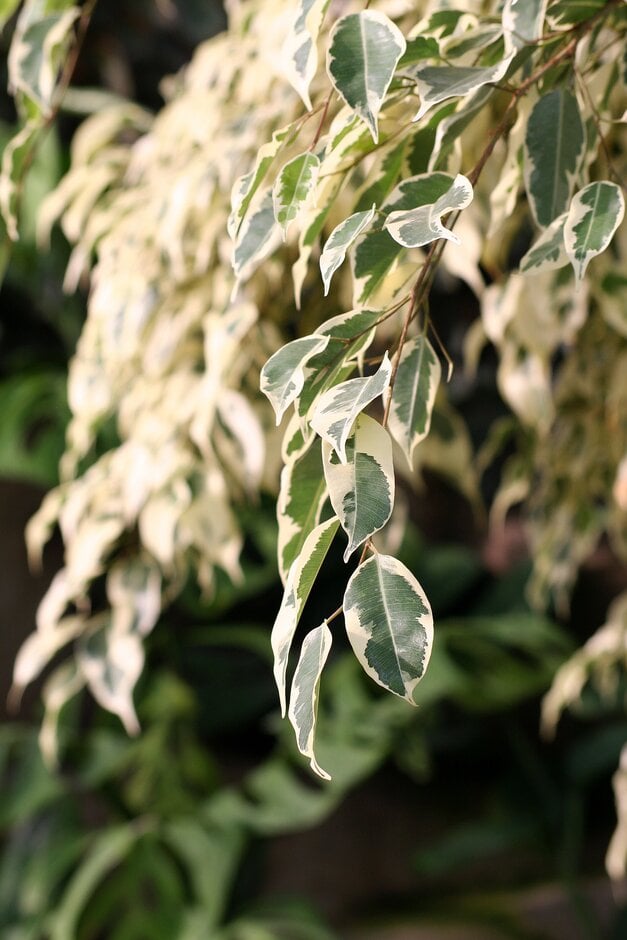Size
Ultimate height
2.5–4 metresTime to ultimate height
10–20 yearsUltimate spread
2.5–4 metresGrowing conditions
Moisture
Moist but well–drained, Well–drainedpH
Acid, Alkaline, NeutralColour & scent
| Stem | Flower | Foliage | Fruit | |
| Spring | Variegated Green White | |||
|---|---|---|---|---|
| Summer | Variegated Green White | |||
| Autumn | Variegated Green White | |||
| Winter | Variegated Green White |
Position
- Full shade
- Partial shade
Aspect
South–facing or East–facing or West–facing
Exposure
Sheltered Hardiness
H1CBotanical details
- Family
- Moraceae
- Native to GB / Ireland
- No
- Foliage
- Evergreen
- Habit
- Bushy, Pendulous weeping
- Potentially harmful
- Humans/Pets (dogs): Skin allergen, harmful if eaten. For further information and contact numbers regarding pets, see the HTA guide to potentially harmful plants
- Genus
Ficus can be evergreen or deciduous trees, shrubs or climbers, with often leathery, simple, entire or lobed leaves and tiny flowers borne within a hollow receptacle which enlarges to form the fruit
- Name status
Accepted
How to grow
Cultivation
Under glass grow in peat-free, loam-based potting compost with added fine bark chippings in full or filtered light. When in growth water moderately and keep just moist in winter. Maintain an even temperature with a minimum of 13⁰C. See ornamental fig cultivation for more advice
Propagation
Propagate by semi-hardwood or leaf-bud cuttings
Suggested planting locations and garden types
- Patio and container plants
- Low Maintenance
Pruning
Pests
May be susceptible to glasshouse red spider mite and scale insects
Diseases
May be susceptible to honey fungus
Get involved
The Royal Horticultural Society is the UK’s leading gardening charity. We aim to enrich everyone’s life through plants, and make the UK a greener and more beautiful place.
